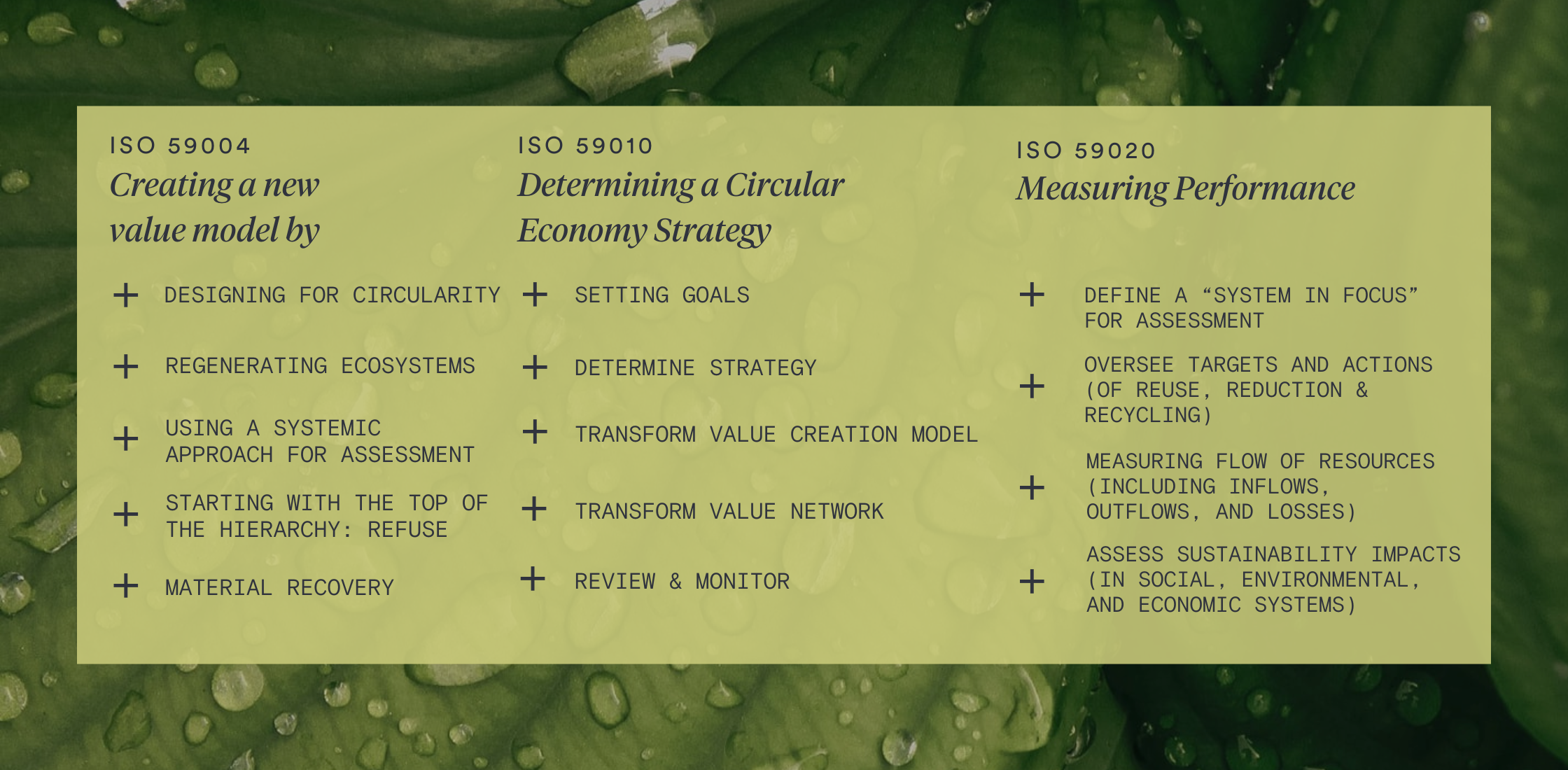How do the new ISO Circular Economy standards support businesses in their transition to a circular economy?
There is now a globally recognised standard for the circular economy just like there is for Food Safety, Environmental Management and Information Security.
Earlier this year, the International Organisation for Standardisation (ISO) released the ISO Circular Economy 59000 series which includes:
+ ISO 59004: Terminology, Principles & Guidance for Implementation+ ISO 59010: Guidelines for the Transition of Business Models and Value Networks+ ISO 59020: Measurement and Evaluation of CircularityCreating a common framework and complete toolkit for organisations to implement, measure, and transition towards a circular economy model.
The standards were developed in collaboration across 100 countries and 75 national standardisation bodies, including those from developing countries.
This broad, global participation suggests that these standards will be a key enabler of the transition to a circular economy in a wide range of markets, allowing for greater transparency and accountability.
So, why do these standards exist?
Simply put, there are three main reasons why these standards exist:
+ Organisations seek to align circular economy with their global sustainability goals+ Regulatory pressures from circular practices are increasing with eco design specifications+ Consumers demand more credible sustainable products and servicesHow can we use these standards to transition to a circular economy?
For organisations and governments alike, these standards introduce new circular economy principles, support implementation steps, provide guidance for creating value networks, and enable measurable circular economy outcomes. All of which enable the validation of approaches for specifying, designing, procuring circular materials, products, and processes.
They bring clarity to how a circular economy is defined: a model of resource production and consumption that involves sharing, repairing, recycling and regenerating materials at high value.
Establishing six foundations principles:
+ Systems thinking+ Value creation + Value sharing+ Resource management+ Resource tracking+ Ecosystem resilienceThere is a long list of potential actions businesses can implement circular economy at pace and at scale -
Our hope is that these standards accelerate this transition, encourage target reductions for materials extraction, and circularity goals by businesses, industries and countries.
How can businesses and industries use these standards to drive outcomes for nature?
The ISO circular economy standards, especially the ISO 59000 family, create guidance and principles that drive positive outcomes for nature by identifying and defining the following actions:
These actions can drive systemic changes that benefit nature by encouraging organisations to rethink their relationship with their environmental goals, processes, measuring and communication.
Earlier this year our Founder and CEO Louise Nash had the pleasure of attending the Sustainable Brands Symposium where she had the opportunity to introduce and participate in Dr Leyla Acaroglu’s workshop, which included a discussion around the new ISO Circular Economy Standards.
Keen to read a global perspective on the ISO circular economy standard? Read Leyla’s quick guide here.
Link to the complete ISO standards here
How might your business demonstrate circularity using these standards?
At Circularity, we are exploring the benefits of using these new standards for our clients and projects.
We’d love to hear from you.
Take the next steps with us— reach us via hello@circularity.co.nz to start your journey today.



